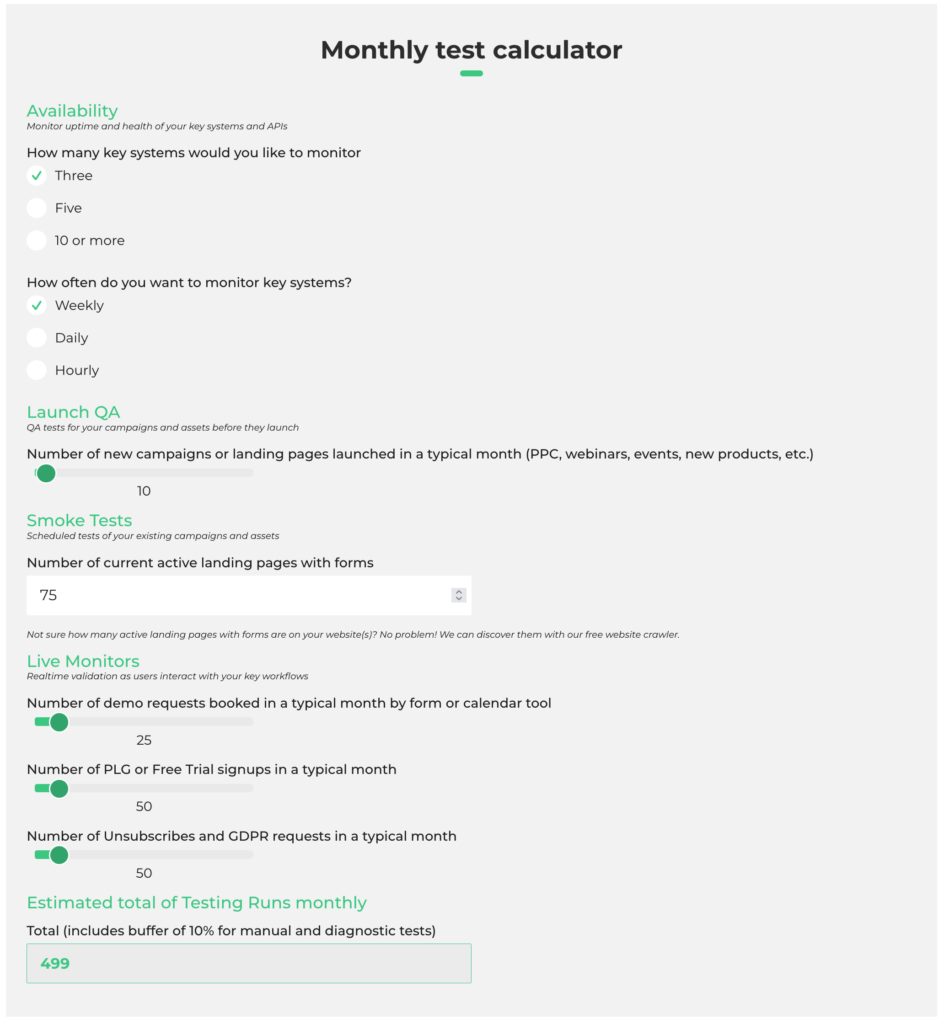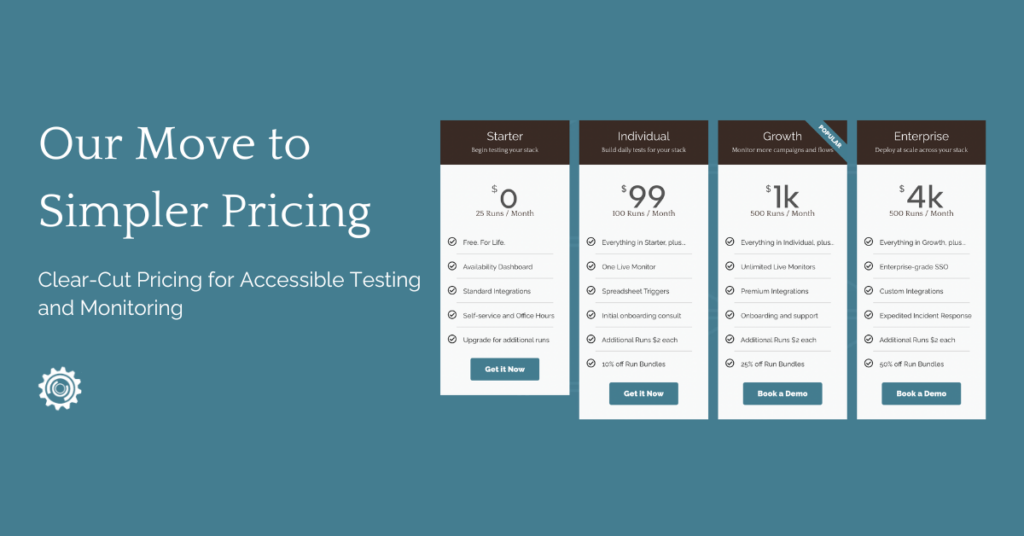We just launched new, simpler pricing at Stack Moxie, designed with marketing ops teams in mind. Marketing ops teams are increasingly asked by marketers to bring technical expertise–not just for managing systems and data–but for designing, launching, and maintaining campaigns and key workflows. That means that marketing ops teams don’t have the luxury of waiting for the next budget cycle. They need to start building campaign testing into their process immediately.
We took this feedback from our customers and rebuilt our pricing to let teams of all sizes get started immediately with the tools they need. We hope this update encourages every marketing organization to prioritize testing and monitoring as a core part of what they do.
We had three goals with our pricing changes:
- Make pricing simpler to understand
- Introduce premium features on smaller plans
- Lower the entry price for our corporate plans
The shift to simpler pricing
Stack Moxie has always believed in the power of transparency, especially as a way to foster a culture of trust and enable marketing and revenue teams to excel. Transparency is crucial because it builds trust – and our new simplified pricing structures goes a step further to give our customers more ability to choose how they want to use and pay for the product. We believe that when teams understand what they’re paying for and why, they’re more likely to invest in tools that can genuinely make a difference. This trust is essential in areas as critical as marketing, where the tech stack is the backbone of engaging customers and driving revenue.
But the truth is that transparency isn’t always good enough. We’re creating a new category of software: More than that, we’re challenging marketing and marketing ops to work together in new ways to solve old problems. This is new to everyone. We have to do a better job of describing exactly what our product does, and what it looks like to use our product on each of our plans. That applies to PLG pricing as well as to our enterprise plans where our sales and customer success teams are engaging directly with our prospects and customers.
Introduce premium features on smaller plans
We’ve moved several of our enterprise level features into the Individual and Growth plans. Here are some examples:
Live Monitors
Live Monitors give you realtime alerts on your key workflows, like contact-us forms, demo bookings, and support tickets. They were previously only available on the enterprise plans costing $72,000 and above. You can now get one Live Monitor on our $99 Individual plan, and unlimited Live Monitors on our Growth plan, which starts at $1,000/month.
Spreadsheet Triggers
Spreadsheet triggers are an incredible way to create, launch, and schedule tests at scale, in the tool where you work. Like Smartsheet, Google Sheets, or Airtable. Previously only available on Enterprise plans, Spreadsheet Triggers are now available on all of our paid plans, beginning at $99.
SSO (SAML)
SSO (SAML) was previously only available on enterprise plans. It’s now included on our Growth plan, starting at $1,000/month.
Lower the entry price for corporate plans
You can now get started with our Growth plan for $1,000 a month with an annual contract. That’s 50% lower than the previous price. We also lowered the price for our Enterprise plan. Our top level plan now starts at $4,000 a month, with an annual contract.
Both the Growth plan and the Enterprise plan come with 500 monthly test runs included. You can see what kind of test coverage 500 runs can give you by taking a look at our Run Estimator calculator.

For many of our first-year customers, 500 runs is enough to build out test coverage and make significant impact on their reliability and quality.
For customers who want to build out comprehensive test coverage, we’ve introduced run bundles on each of our paid plans, priced to help you scale your testing at whatever level you’re ready to build.
Our approach aims to democratize access to advanced testing capabilities, encouraging teams to adopt a test-driven mindset similar to that of their engineering counterparts. This shift positions marketing teams as guardians of the organization’s most valuable tech stack. In doing so, we want to be a partner in driving efficiency, innovation, and growth.

